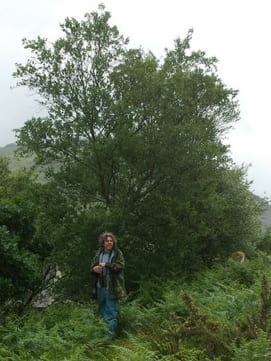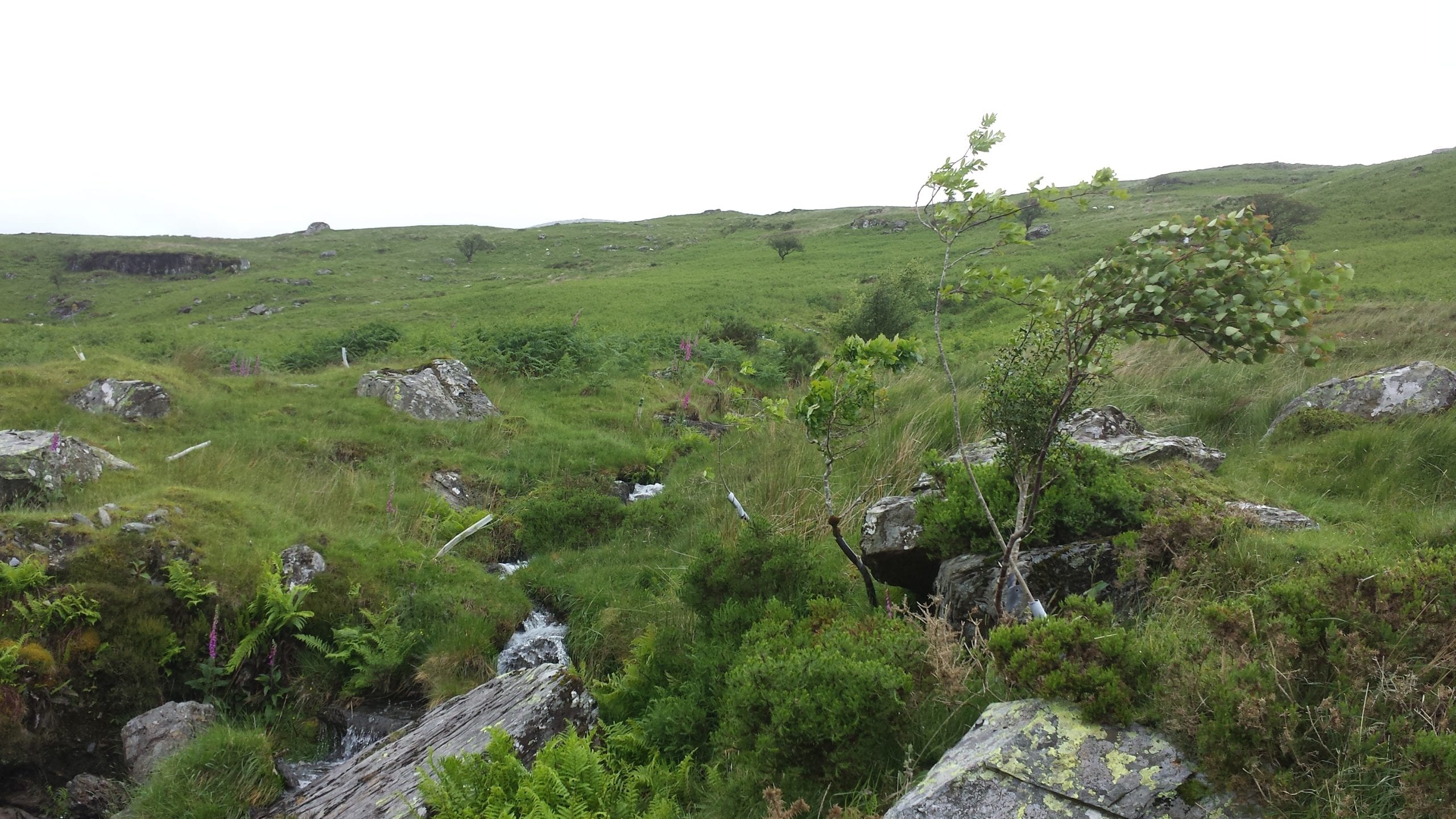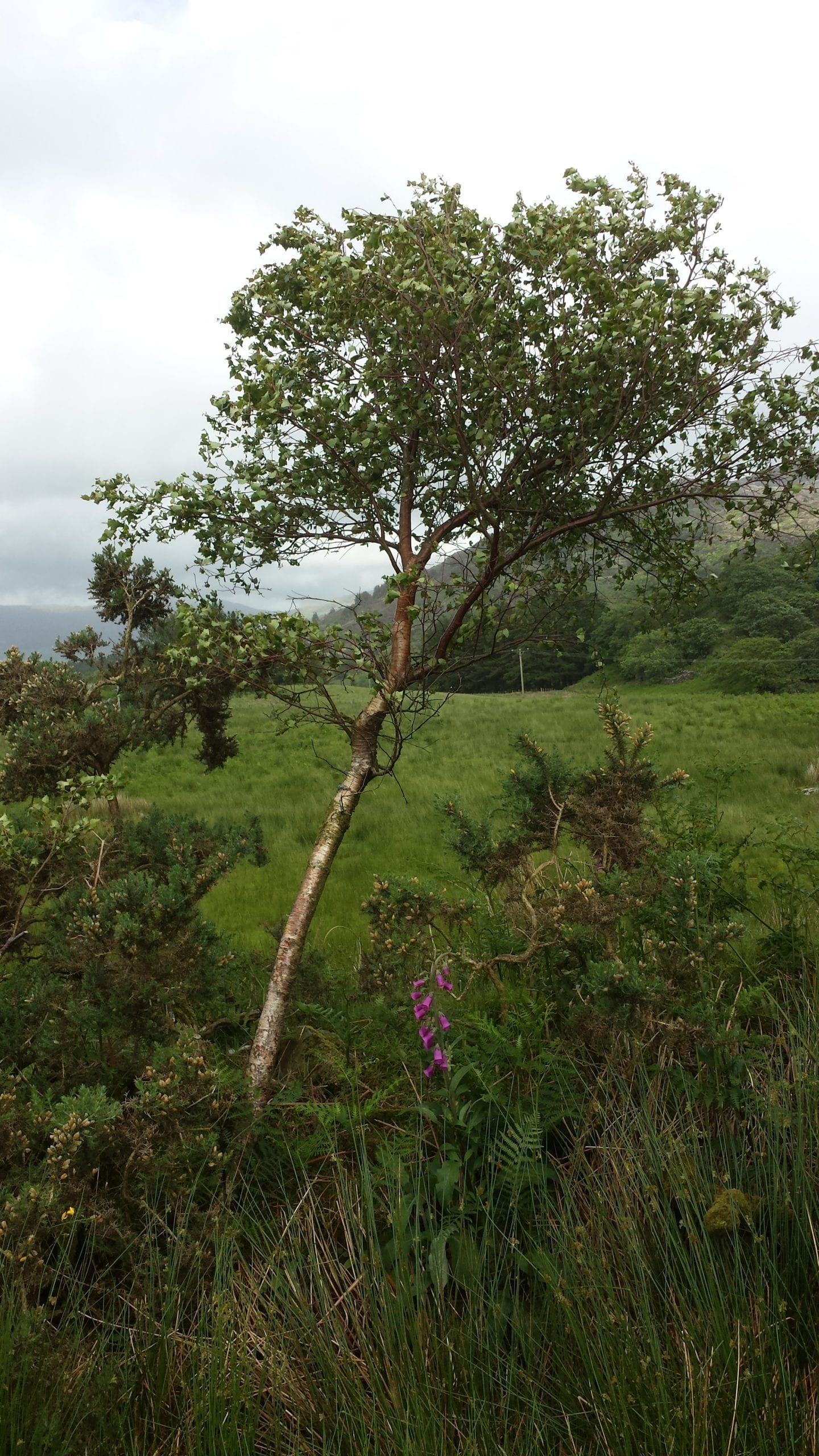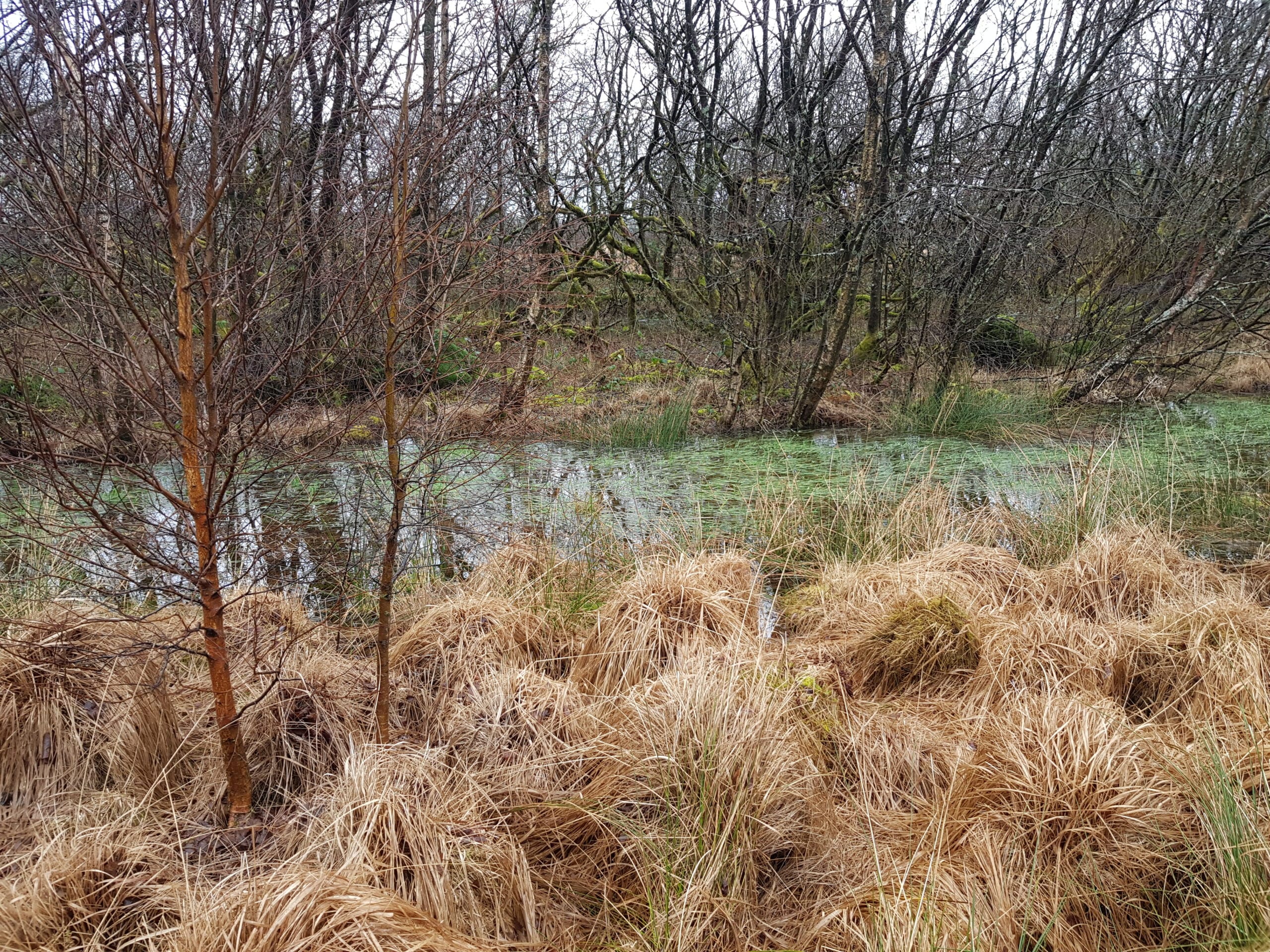
The volunteers who come to work at Coetir Anian / Cambrian Wildwood are the heart and driving force of the project. A great part of what happens on the land is down to the work of volunteers on the monthly work days. It is also a fundamental way for people to be part of Coetir Anian, and to not only give time and work, but also to influence how the project evolves and to interact directly with the landscape.
One of the popular activities on the land is tree planting. Last winter we planted three small areas of new woodland at high density, to establish some foundation areas in thick bracken. These will provide new habitat in the short term and over the longer term they will be seed sources for the further spread of trees. This winter we will start an ongoing programme of ‘No Fence Planting’, which will be continued indefinitely into future years, planting a few hundred trees a year.


No Fence Planting covers a range of techniques to establish trees in the presence of herbivores and without the use of protective fencing. Generally the trees are planted at low density, as single trees or small groups. A couple of years ago, we published an article on the website, Sabre Planting with the Tree Shepherd.
The article describes the work of Steve Watson who has pioneered and refined the techniques. Over 35 years, he has established hundreds of acres of woodland in Snowdonia, with the agreement of the landowners, and in the presence of sheep grazing.
The results are resounding improvements for the landscape, for wildlife, for carbon sequestration, and significantly for the livestock. Pasture is improved and opportunities for shelter greatly enhanced, resulting in noticeable increases in the productivity of the land.
These acres challenge the debate presenting an opposition between grazing and trees. As Steve points out, trees and woodlands evolved in the presence of herbivores, and a wooded landscape without herbivores is not natural. His techniques are taken directly from close observation of how trees naturally become established in the presence of browsing pressure. The potential for increasing tree cover in the uplands through No Fence Planting is huge.

There are three main techniques used:
‘Sabre’ planting: This makes use of topography in the landscape. Trees at about 4 feet (1.2 metres) in height are planted on a steep slope at a right-angle to the ground. The leading shoot is out of reach of browsing, or if it is browsed a less accessible shoot takes over as the lead. Often the trees take on a curved form as they correct their original planting angle to grow vertically.


Use of cover: Existing cover in the landscape, for example gorse, bramble, thorns and bracken, are used to provide cover for the new trees.
Again, trees at about 4 feet (1.2 metres) in height are planted on the edge of thickets or within bracken. It is not only the difficulty of access that protects the trees here; another factor is the way the trees are hidden from view by the cover vegetation.
Forked willows: This technique uses 9 foot (2.7 metre) willow cuttings – single cuttings are vulnerable to the wind and so forked cuttings are chosen to provide stability. The cuttings are pushed 4 foot into the ground, with the fork just below the ground surface and two 5 foot stems above ground.

Coetir Anian will use all these techniques to establish more tree cover.
Steve has also developed a new planting method in response to the challenges presented by Bwlch Corog. A large part of the site is covered in purple moor grass (Molinia caerulea) which creates a dense mat of vegetation difficult for trees to establish into; in addition, the topography of this area does not include much steep ground and there is very little cover. We will use willow cuttings as sticks pushed almost completely into the ground. Planting a large number in dense groups will in theory enable some to escape from browsing pressure. Additionally, as willow is the most favoured species for browsing by the horses, they will act as a decoy from other species of trees growing.
With the development of willow scrub in the purple moor grass, and the addition of downy birch, a very special type of habitat will be restored to the landscape. The National Vegetation Classification identifies this as ‘W4 Betula pubescens – Molinia caerulea woodland’.
